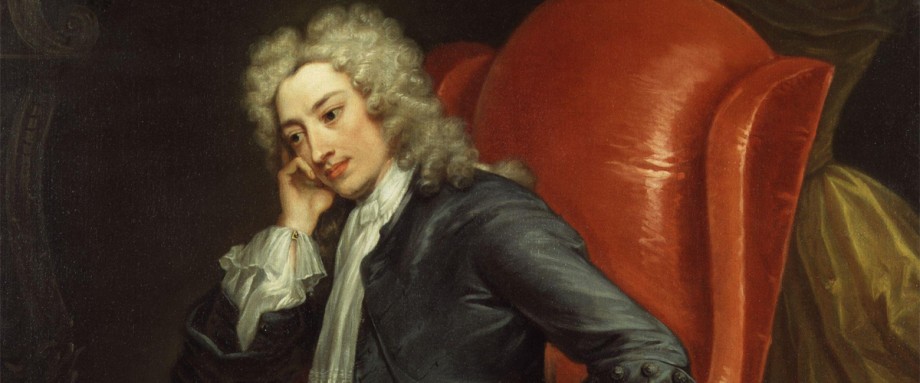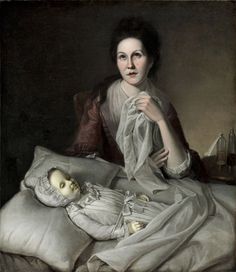Critical Analysis of To My Nanny:
This poem describes an incident from the poet’s childhood but does not give us any exact details. It is unclear why the poet had left the house, and whether he had even told his nanny before leaving. As he describes how anxious she was for his return, his tone is not remorseful at all. This is bound to make readers wonder. Why is the memory of his primary caregiver in fear a good one for the poet? To answer this question, you must go beyond the surface depictions in the poem, to the very emotions from which the memory of that incident emerges. For the poet, it is endearing that someone could care about him so much as to give up all her work and wait for him till he returns. He is grateful that his nanny didn’t get angry at him when it would have been entirely justified if she had been angry. Instead, she feels that she must direct her anger at some other thing. At such a moment of worry, she loses her rationality and does something as absurd as blaming the clock instead, as if its hands were moving faster than they were supposed to. However, this does not make the nanny seem either foolish or unjust. It just makes us love her as much as Pushkin himself did. This poem is his way of saying that only his nanny could sacrifice so much time and energy, and invest so much worry in his well-being. Even more than his parents, his nanny deserves his love, and that is why it is his nanny he remembers after all these years and not anyone else.
Annotation of To My Nanny:
Please note: N= noun, V=verb, Adj=Adjective, Adv=Adverb, P=Preposition
Nanny (N): A person, typically a woman, employed to look after a child in its own home
Doting (Adj): Extremely and uncritically fond of someone; adoring
Sweetheart (N): Used as a term of endearment or affectionate form of address
Companion (N): A person or animal with whom one spends a lot of time or with whom one travels
Austere (Adj): (Of living conditions or a way of life) having no comforts or luxuries
Fate (N): The course of someone’s life, or the outcome of a situation for someone or something, seen as outside their control
Lone (Adj): Having no companions; solitary or single
Patiently (Adv): With fortitude and calm and without complaint, anger, or the like
Wrinkled (Adj): With a lot of wrinkles, that is, small lines in the skin caused by old age
Knitting (N): Material which is in the process of being knitted, that is, being made by interlocking loops of wool or other yarn with knitting needles or on a machine
Fitfully (Adv): Not regularly or continuously; intermittently
Falters (V): Third person present tense of the word “falter”, that is, to move unsteadily or hesitantly
Crumbling (V): Present participle form of the word “crumble”, that is, to break or fall apart into small fragments, especially as part of a process of deterioration
Shadow (V): Envelope in shadow; cast a shadow over
Forebodings (N): Plural form of the word “foreboding”, that is, a feeling that something bad will happen; fearful apprehension
Anxieties (N): Plural form of the word “anxiety”, that is, a feeling of worry, nervousness, or unease about something with an uncertain outcome
Oppress (V): Keep (someone) in subjection and hardship, especially by the unjust exercise of authority
Visions (N): Plural form of the word “vision”, that is, an experience of seeing someone or something in a dream or trance, or as a supernatural apparition
Haunt (V): (Of something unpleasant) continue to affect or cause problems for
Poetic Devices in To My Nanny:
Rhyme scheme:
“To My Nanny” is a sonnet, as we have mentioned before in the summary of this poem. Sonnets typically occur in two types of rhyme schemes – in the pattern ABBA ABBA CDE CDE, which is known as the Petrarchan sonnet, or in the pattern ABAB CDCD EFEF GG, which is known as the Shakespearian sonnet. In ‘To My Nanny’ neither of these patterns is followed in its entirety. The rhyme scheme of ‘To My Nanny’ is as follows: ABAB CDCD EFEF GH. Thus it is an atypical sonnet, though it does not go without saying that its pattern is very similar to the pattern of a Shakespearean sonnet.
Rhetorical devices:
Apostrophe:
This rhetorical device is used when a poet addresses his or her poem to an absent audience. “To My Nanny” is entirely addressed to the poet’s nanny. He speaks to her directly through this poem. However, the nanny in question is not visible to us readers at any point in the poem.
Alliteration:
This rhetorical device is identified by the repeated sound of the first consonant in a series of multiple words, or the repetition of the same sounds or of the same kinds of sounds at the beginning of words or in the stressed syllables of a phrase. In this poem, the poet uses the device of alliteration in the repetition of the “d” sound in line 1 when he writes “Dear doting sweetheart of my childhood” and also in the repetition of the “f” sound in line 8 when he writes “Fitfully falters to a stop”.
Transferred epithet:
This rhetorical device is used when an emotion is attributed to a non-living thing after being displaced from a person, most often the poet himself or herself. In this poem, the poet uses the device of transferred epithet in line 3 when he refers to a “lone house”. Of course, it is not that the house itself feels lonely, but that his nanny feels lonely when she is in that house.
Transposed sentence:
Poets often change the sequence of words in their lines in order to maintain the rhyme scheme chosen by them for that particular poem. In this poem, the poet uses the device of transposed sentence in line 4 when he writes “How patiently for me you wait” instead of writing “How patiently you wait for me”, and also in line 5 when he writes “Alone beside your window sitting” instead of writing “Sitting alone beside your window”, the latter sentences being the more grammatically correct in each case.
Personification:
This rhetorical device is used to bestow human qualities on something that is not human. In this poem, the poet uses personify the nanny’s forebodings and anxieties when he imagines them with the human capability to oppress or mistreat the nanny.
Central Idea of To My Nanny:
The poet remembers an event from his childhood when he was away from home for too long, and his nanny was waiting for him while watching the path outside her window that the poet would have taken on his way back. The fact that she had been so anxious for his return convinces the poet that no one had cared about him more than his nanny.
Themes of To My Nanny:
Aristocratic lifestyle:
Pushkin here inadvertently reveals the way in which aristocratic families like his lived. They built huge houses in remote places, where there was enough space for a construction of that magnitude. They spent very little time with their own children, leaving them in the care of nannies or governesses. All these were thought to be signs of good breeding.
The position of nannies or governesses in Victorian households:
Pushkin wrote in the Victorian period, and his description of his household adheres to the social mores of that time. While parents had no qualms about leaving their children in the care of nannies or governesses, these nannies or governesses were never considered a part of the family. That is why the poet’s nanny is alone in worrying about the child, and cannot even talk to anyone in the family about her fears.
Effect of anxiety on human beings:
The poet’s portrayal of his nanny in the throes of her fear for the poet is very accurate. He shows how anxiety can lead one to have horrible visions and can leave them speeches. Even if they cannot say why exactly they are anxious, they cannot stop themselves from imagining the worst. Their fingers tremble, and they cannot concentrate on any work, and this is exactly what happens to the nanny when the poet is late returning home.
The Tone of To My Nanny:
At first, the dominant tone in this poem is one of fond remembrance, as the poet says that his nanny had been his constant companion in his childhood. However, as the poem progresses, the tone changes to one of anxiety as we empathize with the nanny who is worrying about why the poet is late coming home one day. The fear is her mind is absolutely clear for us to see. However, underneath this anxiety, the love and care that the nanny holds in her heart for the poet are also very apparent.
Conclusion:
“To My Nanny” is both heart-wrenching and heart-warming. It is very sad to read about how anxiety attacks the old woman while she is waiting for the poet’s return, but it is also beautiful to see her caring about him so much that she is willing to wait for him, no matter how late he is. All in all, the content of the poem is very relatable, and it is bound to delight readers.
Some online learning platforms provide certifications, while others are designed to simply grow your skills in your personal and professional life. Including Masterclass and Coursera, here are our recommendations for the best online learning platforms you can sign up for today.
The 7 Best Online Learning Platforms of 2022
- Best Overall: Coursera
- Best for Niche Topics: Udemy
- Best for Creative Fields: Skillshare
- Best for Celebrity Lessons: MasterClass
- Best for STEM: EdX
- Best for Career Building: Udacity
- Best for Data Learning: Pluralsight













